Contents
BALL MILL INSPECTION PROCEDURES
CLICK HERE NOW TO DOWNLOAD MOST IMPORTANT BOOKS IN CEMENT INDUSTRY + PRACTICAL EXCEL SHEETS TO HELP YOU IN YOUR DAILY WORK
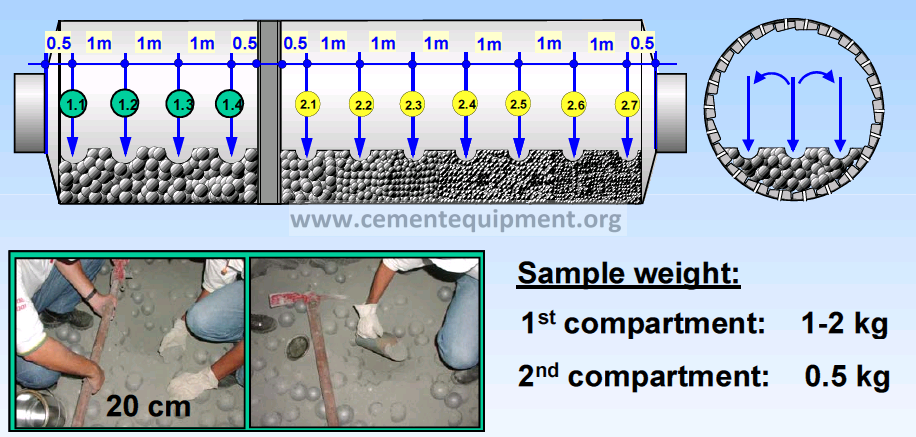
General:
The process engineer should be the doctor of the system
The “doctor” is required for:
- implementation of “Health checks” > Regular action
- urgent investigations of actual process problems> Non-regular action
This presentation focuses on the regular “Health check” procedure.
The “Health checks”consist of standard measurements on a frequent basis
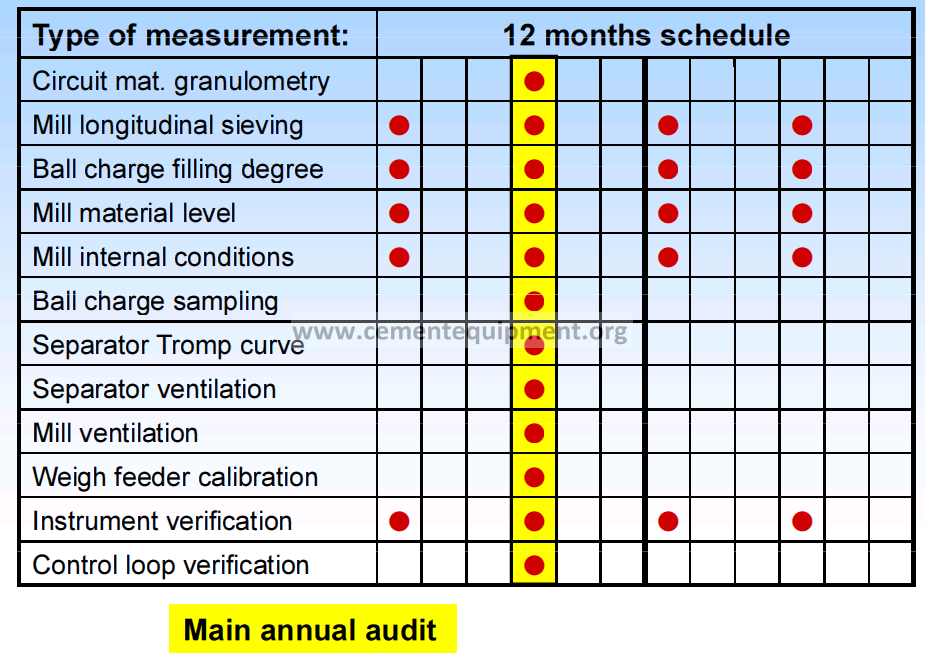
“Healths checks” are important in order to
- build up a knowledge and data base about the system performance
- record data and display them in trends for easy and fast diagnostic of problems.
The Main Advantage :
Knowledge basis allows to investigate the root cause of problems and to avoid problems by early reaction based on the trend results.
For each measurement make sure you have:
- design data of the machines/equipment available.
- constant/stable operation condition for at least 2 hours.
- recorded the actual operation data like:
- – Production rate [t/h], Product type, composition [M-%]
- – Actual and target fineness off product [[Blaine or Residue]]
- – Actual mass flow rate (e.g. separator grits, water demand,etc)
- -Electrical power consumption of the main equipment
- – Actual operation parameter of the main equipment (e.g. separator speed, damper positions)
Material Sampling
Circuit material granulometry:
Sampling points
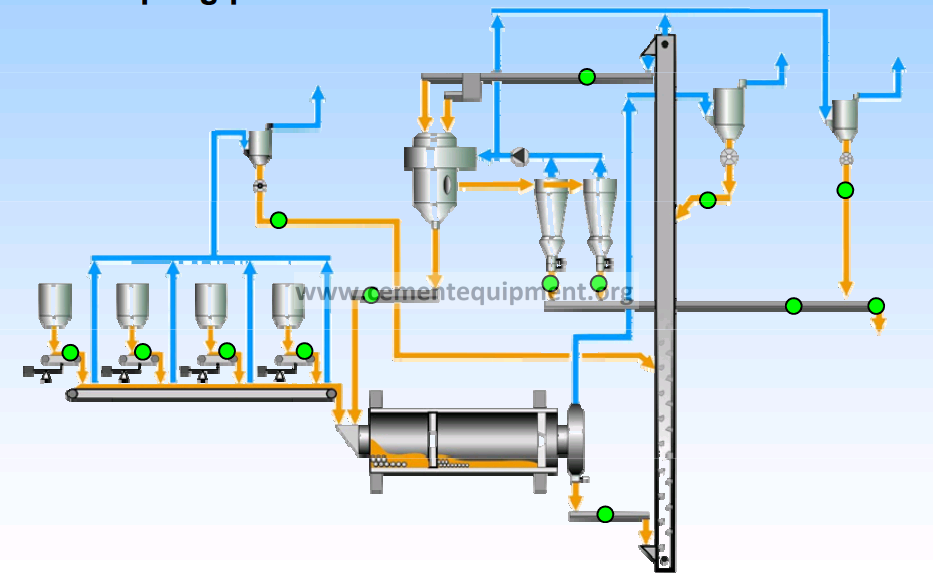
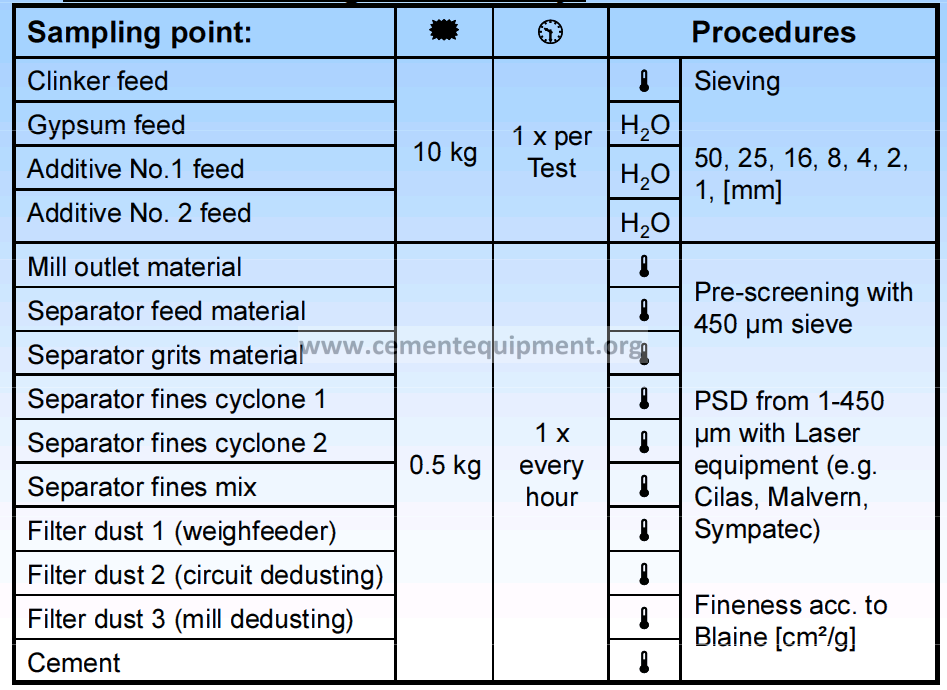
Longitudinal sampling:
Sampling points at crash stop:
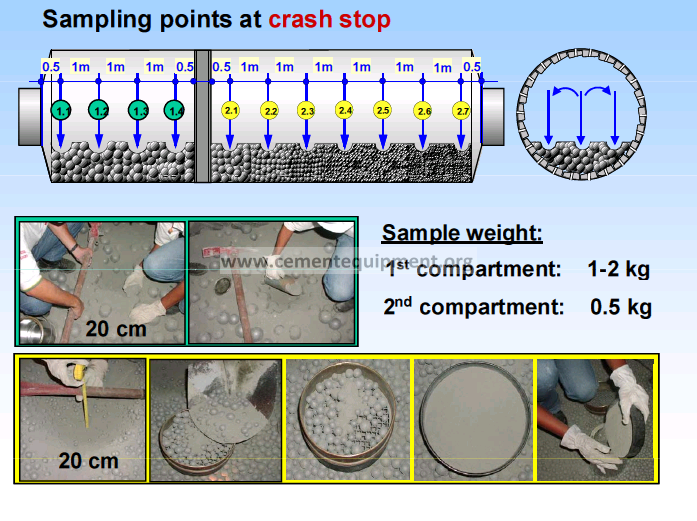
Filling Degree
Ball charge filing degree:
Measurement by free height:
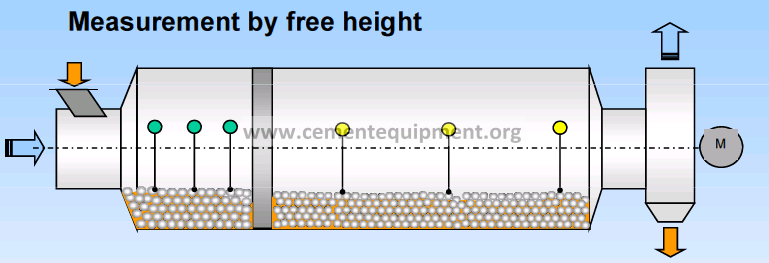
1- Measure average internal g,diameter, Di
2-Measure height, h, in three different points along axis for each grinding compartment
For Best results the measurements takes place in an empty mill (mill feed stopped for approx. 10 min).
Mill material level:
Inspection only at crash stop
Record the material level approx. each meter along axis
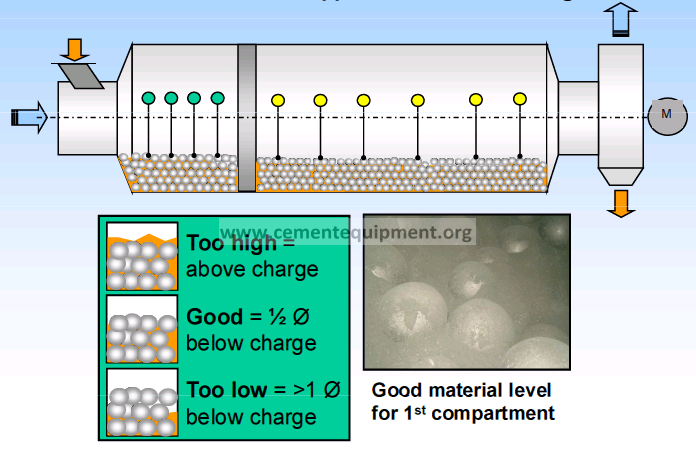
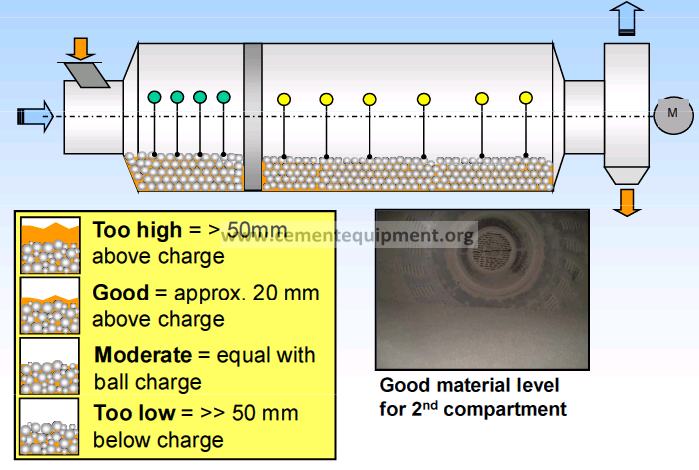
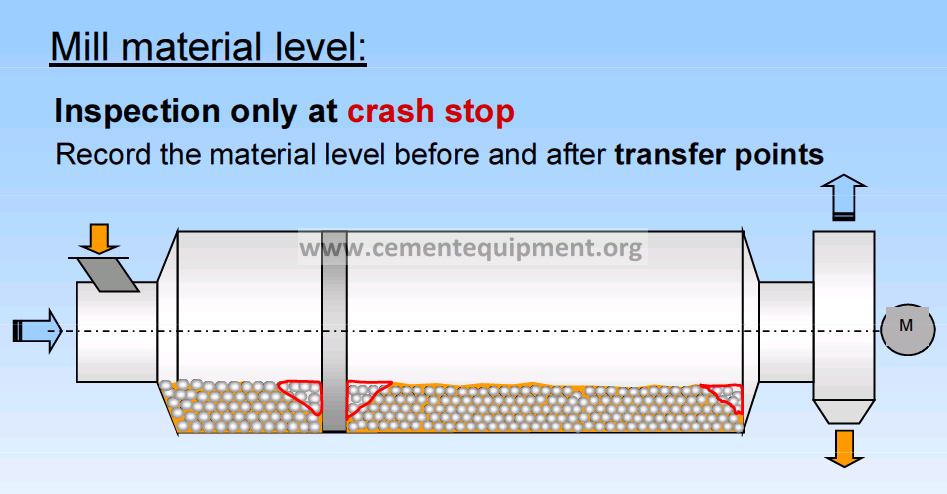
Mill internals condition:
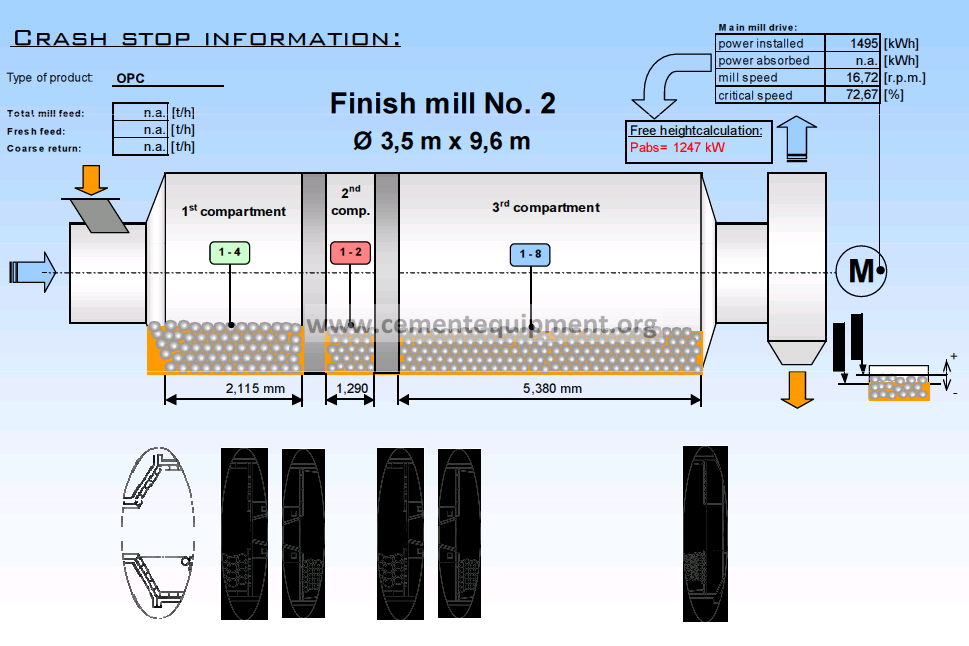
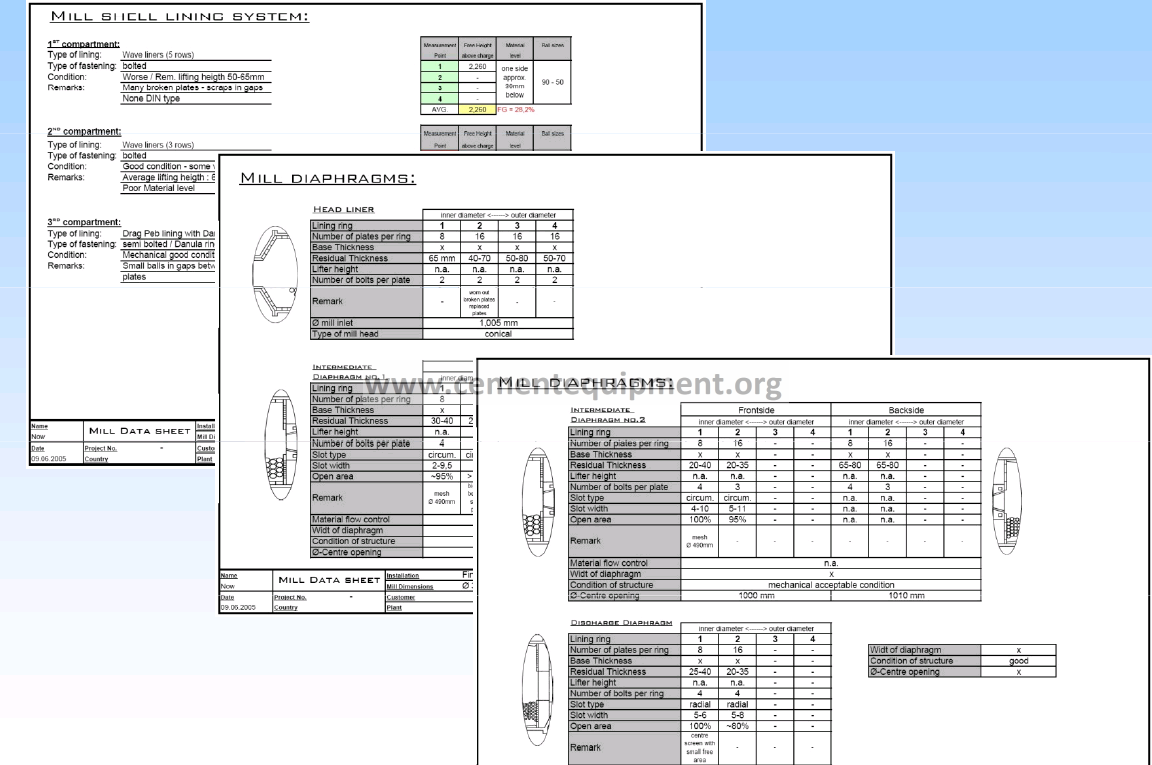
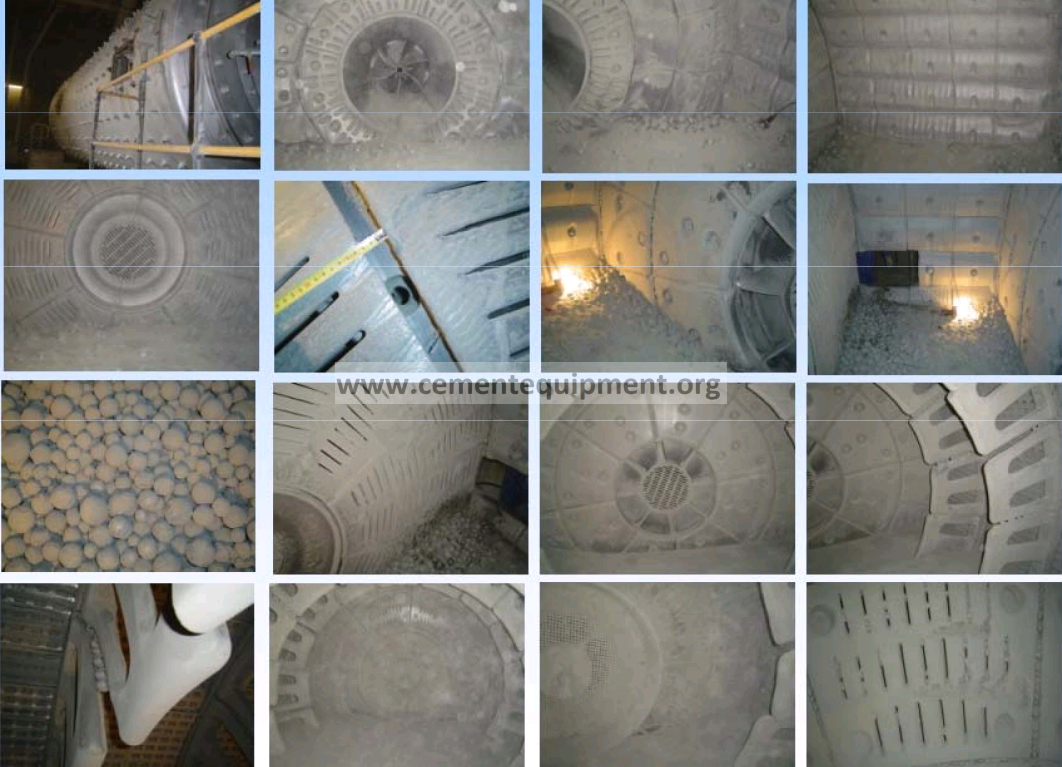
Ball Charge
Ball charge sampling:
Solution 1) Total sorting of ball charge
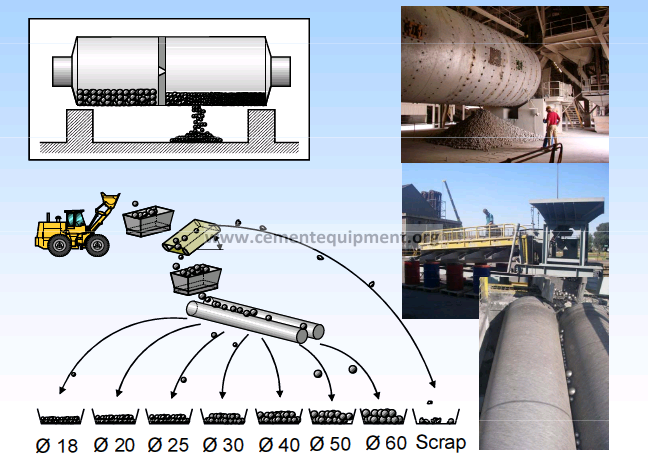
Solution 2) Analysing the actual grinding media composition by spot samples.
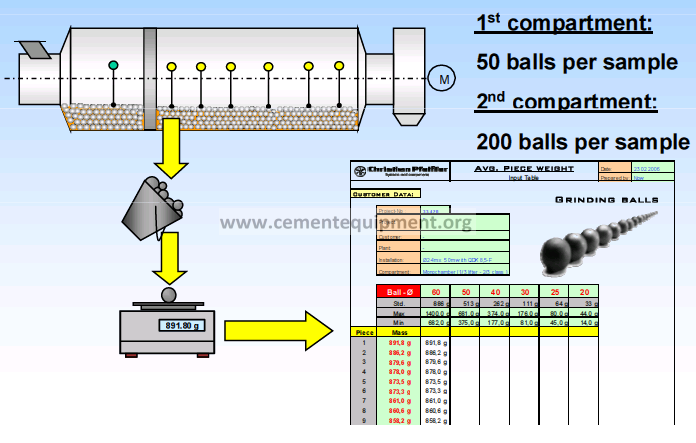
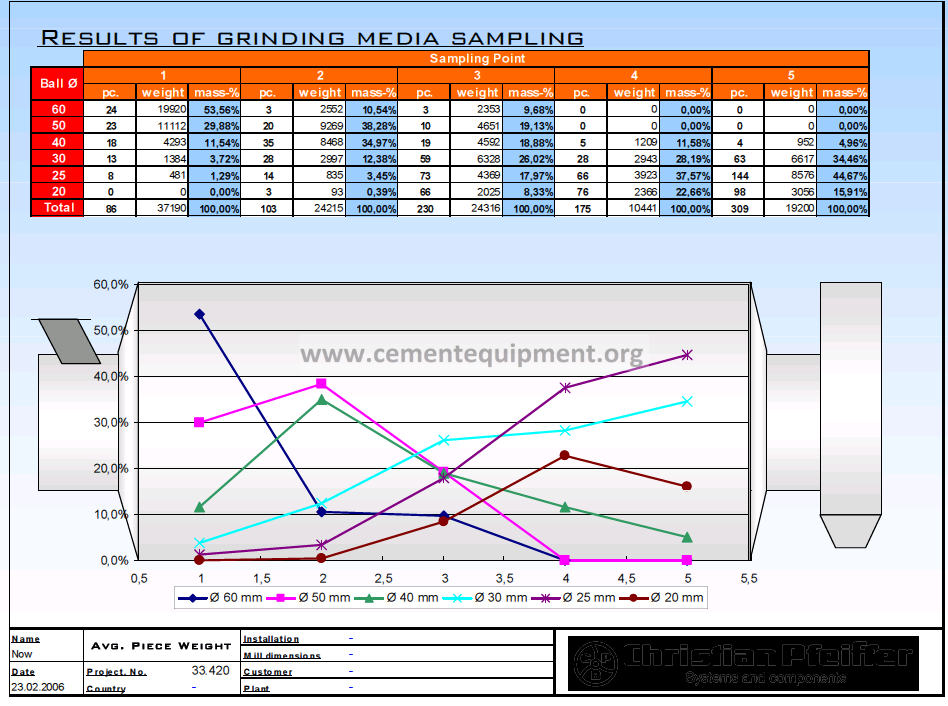
tromp curve:
Separator tromp curve:
Define the sampling points
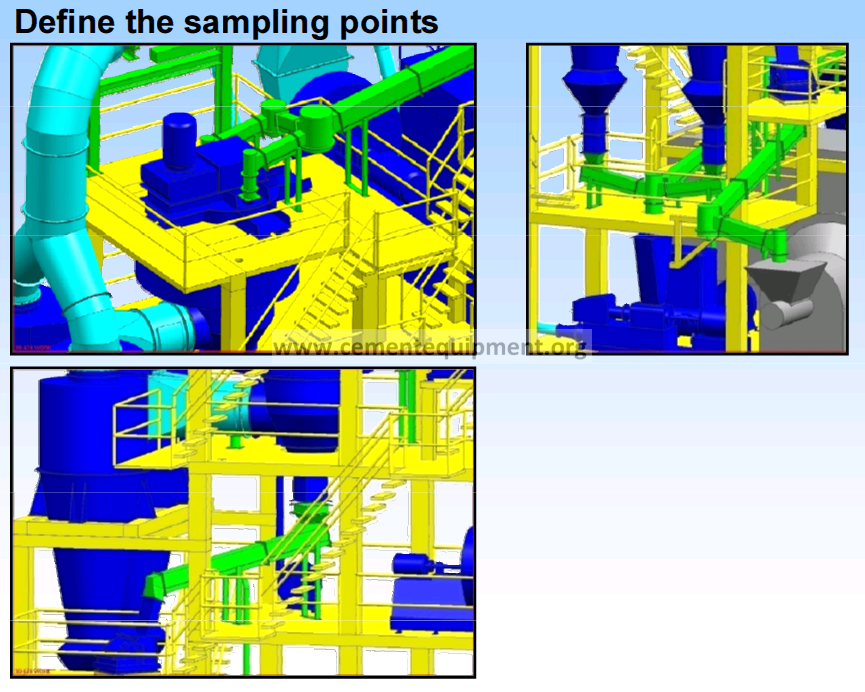
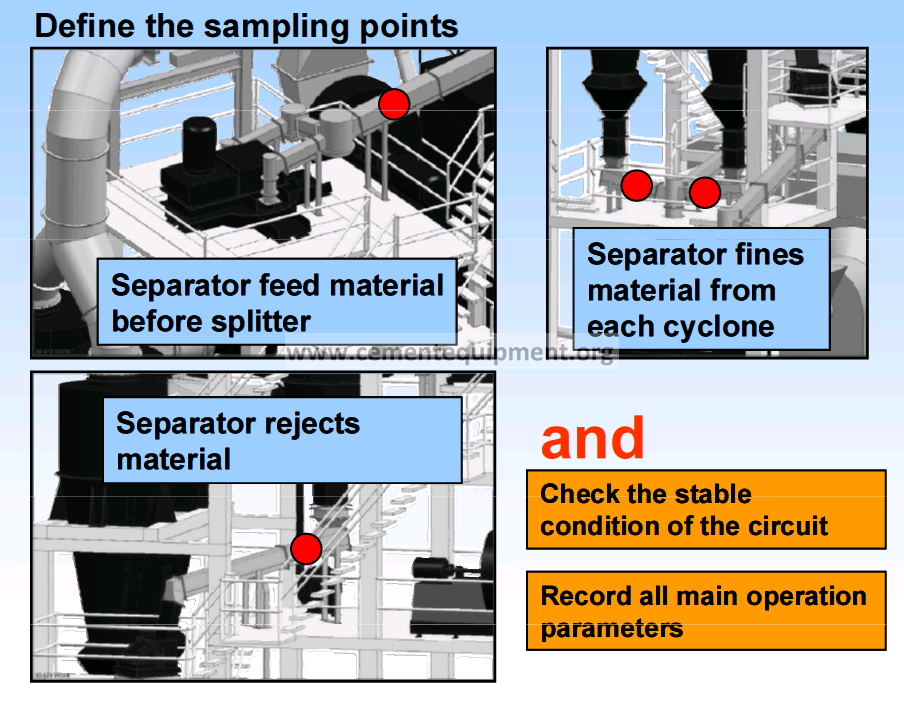
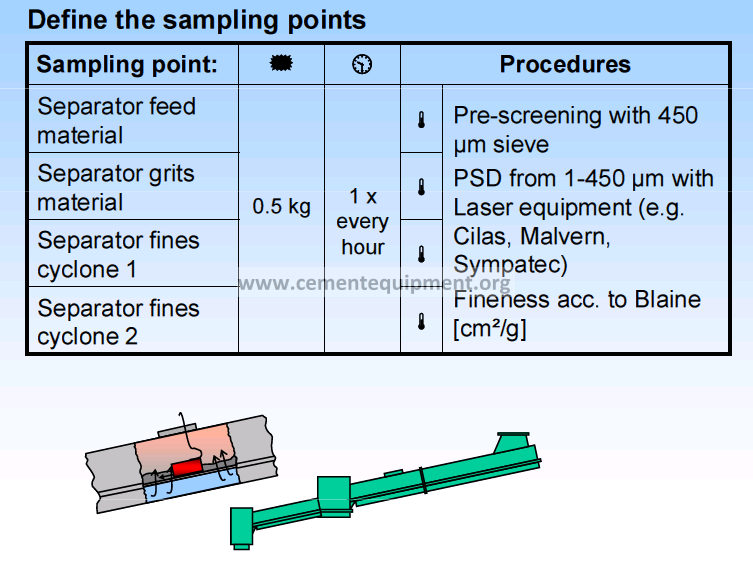
Ventilation
Separator Ventilation:
Basics: Air flow measurement
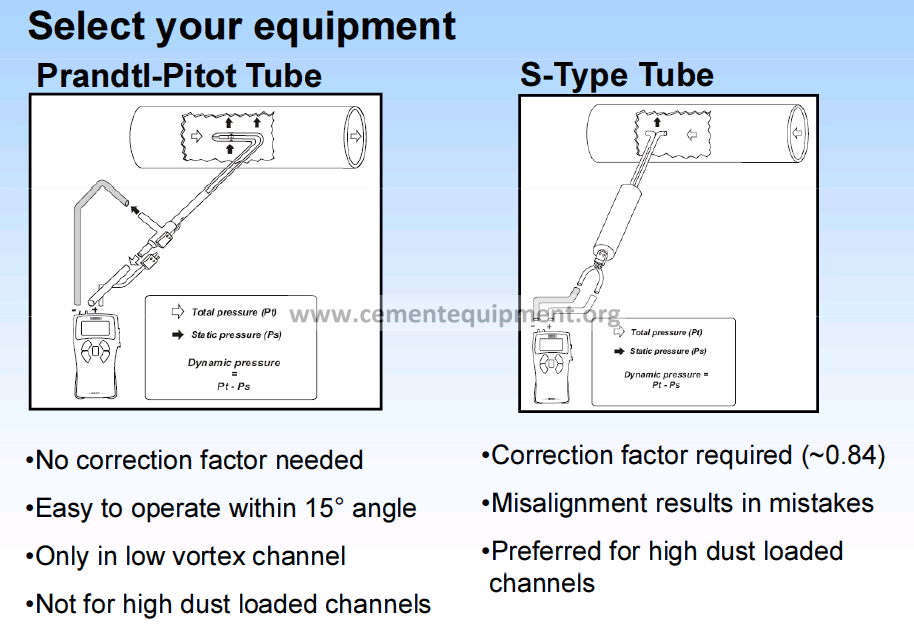
Measurement points:
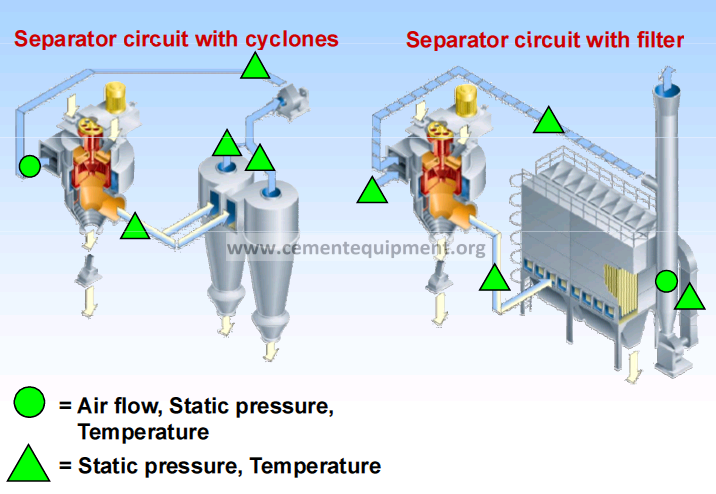
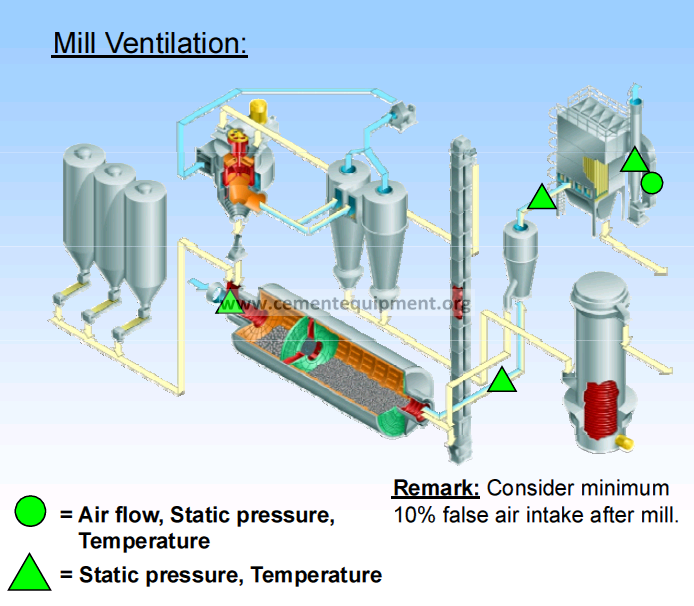
Weigh Feeder
a)Static calibration – feeder not in operation
- Zero-point – adjustment (local control box, no load)
- Span adjustment with calibration weight (local control box)
b)Calibration with feeder in operation (preferred if possible)
- operate weigh feeder with defined setpoint and load material into truck for e.g. 10 minutes, while mill is shut down
- weigh truck empty and loaded, calculate throughput and adjust controller if necessary
Instrument
Instrument Verification:
- Electronically : Check and adjust zero-point and span with e.g. mA-transmitter
- Operation check : Compare control room indication with local manual measurement of temperature, pressure and flow
>Adjust transmitters
Control loop Verification:
1- Operation check :
- record process parameters with control loop in operation over period of e.g. 6-8 hours with constant production
- record mill power consumption at counter KWh
Adjust control loop parameters if required
Information on:
- Available information at the CCR
- Control system
- Control strategy
- First impression on operation
- Circuit stability
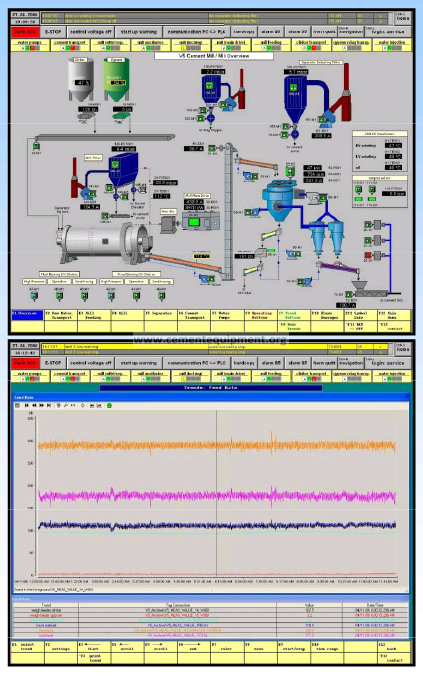
CLICK HERE NOW TO DOWNLOAD MOST IMPORTANT BOOKS IN CEMENT INDUSTRY + PRACTICAL EXCEL SHEETS TO HELP YOU IN YOUR DAILY WORK
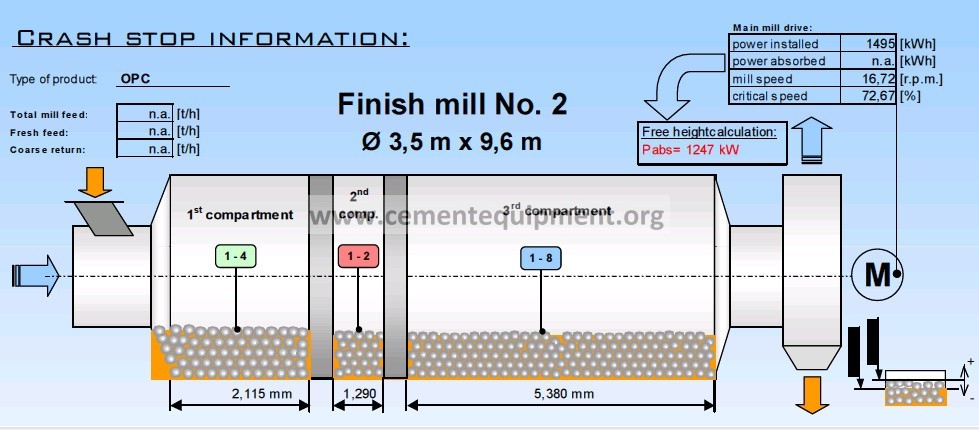
Please can you send me information about cement mill
How to grinding media shot out as per disturb in residue, low production,
Please share packing plant roto packer information also
Ask your doubts on rotary packer. I will tell you